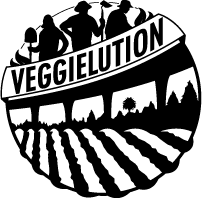What Are They?
Also known as “commercial kitchens,” commissary kitchens are commercial-grade cooking and storage facilities that food service providers partner with to prepare and store their food. All MFF vendors need access to at least one such facility, and are required to include an Approved Facility Agreement when submitting the annual MFF renewal/application form (see Appendix for an example).
Commissary kitchens may provide a number of tools and services which include, but are not limited to:
Cooking space (counter space, industrial-sized ovens, cooktops)
Storage for:
Dry food
Chemicals
Frozen food (refrigeration)
Equipment and utensils
Handwashing facilities
Warewash facilities (i.e. three-compartment sink)
Drinkable water
Grease removal
Trash, recycling, and other waste (i.e. greywater) removal
Food truck parking
Enclosed overnight parking for food carts
Studio space for filming marketing or educational videos
TYPES OF COMMISSARY KITCHENS
Shared commercial kitchen
Such facilities are shared between several food businesses at once. As a result, they tend to be a bit cheaper and have less storage room, since the lease is shared between multiple parties. Since the kitchen is shared, you will only be able to access the facilities at certain hours or on certain days. This can be problematic at more popular commercial kitchens.
Suitable for: Food businesses that have smaller customer bases, such as food truck owners!
Private commercial kitchen
Such facilities are rented entirely to a single individual business. This makes them more expensive, but also means that renting businesses have access to more space, specialized equipment, and can access the kitchen whenever they need to.
Suitable for: Food businesses that have more demanding needs, but still have a fairly limited customer base. This might include businesses that own multiple food trucks; in such a case, the commissary kitchen would serve as a centralized location for all food preparation and storage.
The kitchen of an existing restaurant
Some restaurants lease their kitchens to other food businesses when not in operation. This is essentially a private commercial kitchen. But, be aware that you’ll need to work around the restaurant’s particular schedule and might have less amenities than at a traditional commercial kitchen.
Non-traditional kitchen
This is any large kitchen that meets the health and safety requirements for commercial use. Some examples include community centers, country clubs, schools, and churches. Non-traditional kitchens can be great alternatives due to their reduced popularity, potential for increased access, and cheaper price. Again, it depends on the amenities your business requires.
Of the above categories, most individual MFF vendors will want to use a shared commercial kitchen.
How to Rent a Commissary Kitchen
Make a list of all your needs. What kind of equipment do you require? How much space? Do you need parking or certain appliances? What days and times do you expect to use the kitchen facilities (some kitchens are more popular than others)? This list will become the criteria you’ll use to compare all your options.
Search for local commissary kitchens. Consider the type of commissary kitchen you’re interested in contracting with, and use the web and your personal connections as resources! While most MFF vendors look for shared commercial kitchens, don’t discount non-traditional facilities off the bat. You never know if there are hidden gems in your area.
Veggielution uses iKitchens as our main commissary kitchen. But we also partner with the Garner Community Center to use their facilities.
A list of commissary kitchens in Santa Clara County can be found at The Kitchen Door
Contact the businesses you’re interested in. Visit the space, and understand the facilities, constraints, access policy, and how it measures up to your list of needs.
Make a decision and sign a contract!

